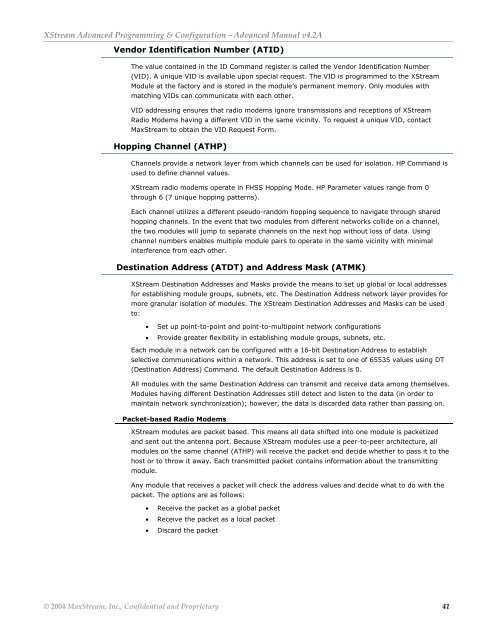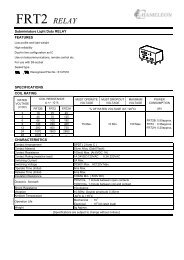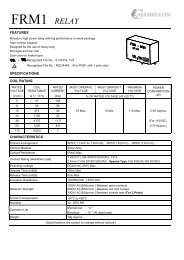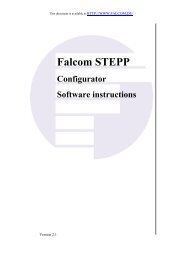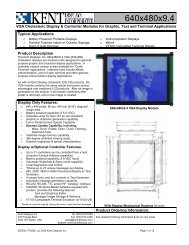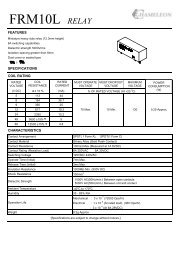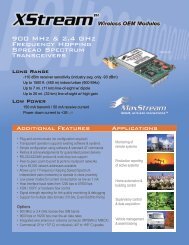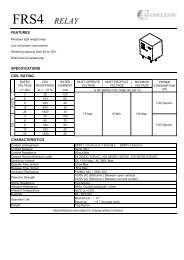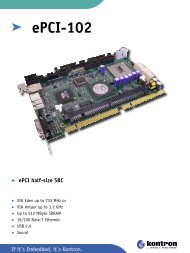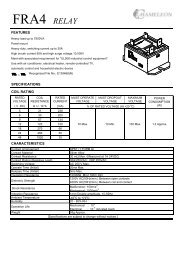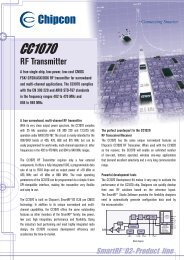XStream⢠Advanced Programming & Configuration
XStream⢠Advanced Programming & Configuration
XStream⢠Advanced Programming & Configuration
Create successful ePaper yourself
Turn your PDF publications into a flip-book with our unique Google optimized e-Paper software.
XStream <strong>Advanced</strong> <strong>Programming</strong> & <strong>Configuration</strong> – <strong>Advanced</strong> Manual v4.2A<br />
Vendor Identification Number (ATID)<br />
The value contained in the ID Command register is called the Vendor Identification Number<br />
(VID). A unique VID is available upon special request. The VID is programmed to the XStream<br />
Module at the factory and is stored in the module’s permanent memory. Only modules with<br />
matching VIDs can communicate with each other.<br />
VID addressing ensures that radio modems ignore transmissions and receptions of XStream<br />
Radio Modems having a different VID in the same vicinity. To request a unique VID, contact<br />
MaxStream to obtain the VID Request Form.<br />
Hopping Channel (ATHP)<br />
Channels provide a network layer from which channels can be used for isolation. HP Command is<br />
used to define channel values.<br />
XStream radio modems operate in FHSS Hopping Mode. HP Parameter values range from 0<br />
through 6 (7 unique hopping patterns).<br />
Each channel utilizes a different pseudo-random hopping sequence to navigate through shared<br />
hopping channels. In the event that two modules from different networks collide on a channel,<br />
the two modules will jump to separate channels on the next hop without loss of data. Using<br />
channel numbers enables multiple module pairs to operate in the same vicinity with minimal<br />
interference from each other.<br />
Destination Address (ATDT) and Address Mask (ATMK)<br />
XStream Destination Addresses and Masks provide the means to set up global or local addresses<br />
for establishing module groups, subnets, etc. The Destination Address network layer provides for<br />
more granular isolation of modules. The XStream Destination Addresses and Masks can be used<br />
to:<br />
• Set up point-to-point and point-to-multipoint network configurations<br />
• Provide greater flexibility in establishing module groups, subnets, etc.<br />
Each module in a network can be configured with a 16-bit Destination Address to establish<br />
selective communications within a network. This address is set to one of 65535 values using DT<br />
(Destination Address) Command. The default Destination Address is 0.<br />
All modules with the same Destination Address can transmit and receive data among themselves.<br />
Modules having different Destination Addresses still detect and listen to the data (in order to<br />
maintain network synchronization); however, the data is discarded data rather than passing on.<br />
Packet-based Radio Modems<br />
XStream modules are packet based. This means all data shifted into one module is packetized<br />
and sent out the antenna port. Because XStream modules use a peer-to-peer architecture, all<br />
modules on the same channel (ATHP) will receive the packet and decide whether to pass it to the<br />
host or to throw it away. Each transmitted packet contains information about the transmitting<br />
module.<br />
Any module that receives a packet will check the address values and decide what to do with the<br />
packet. The options are as follows:<br />
• Receive the packet as a global packet<br />
• Receive the packet as a local packet<br />
• Discard the packet<br />
© 2004 MaxStream, Inc., Confidential and Proprietary 41


